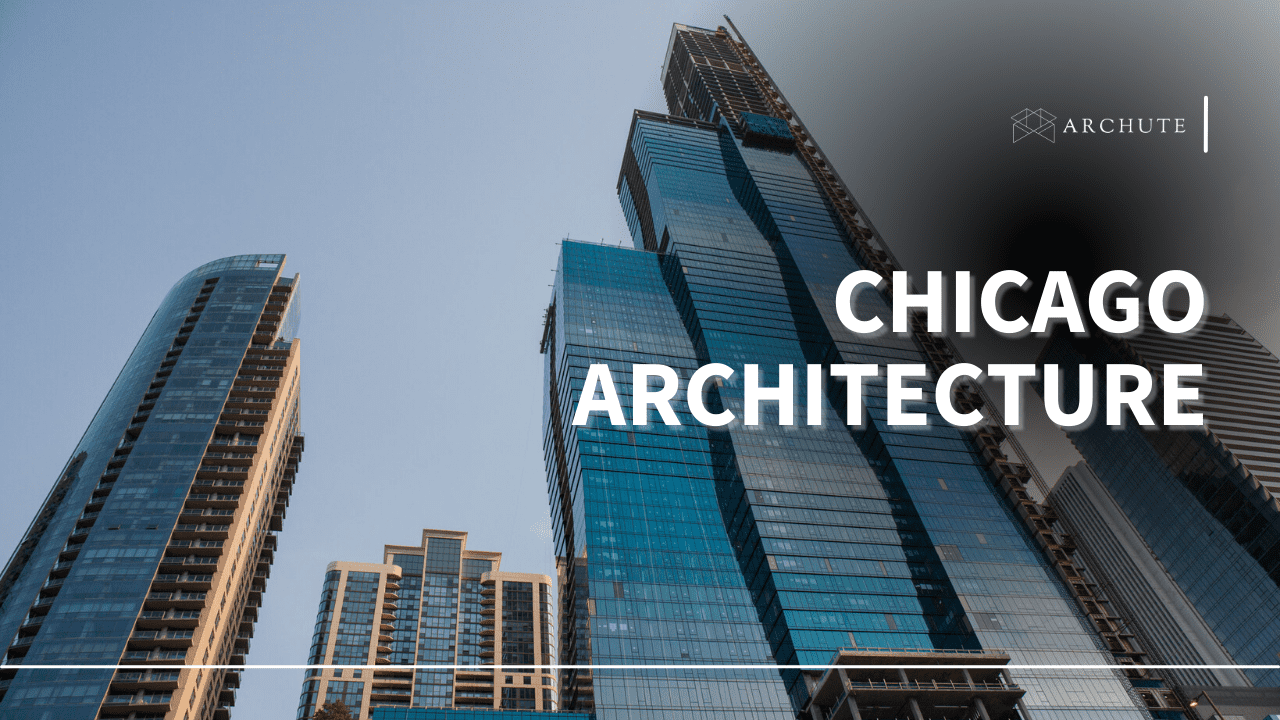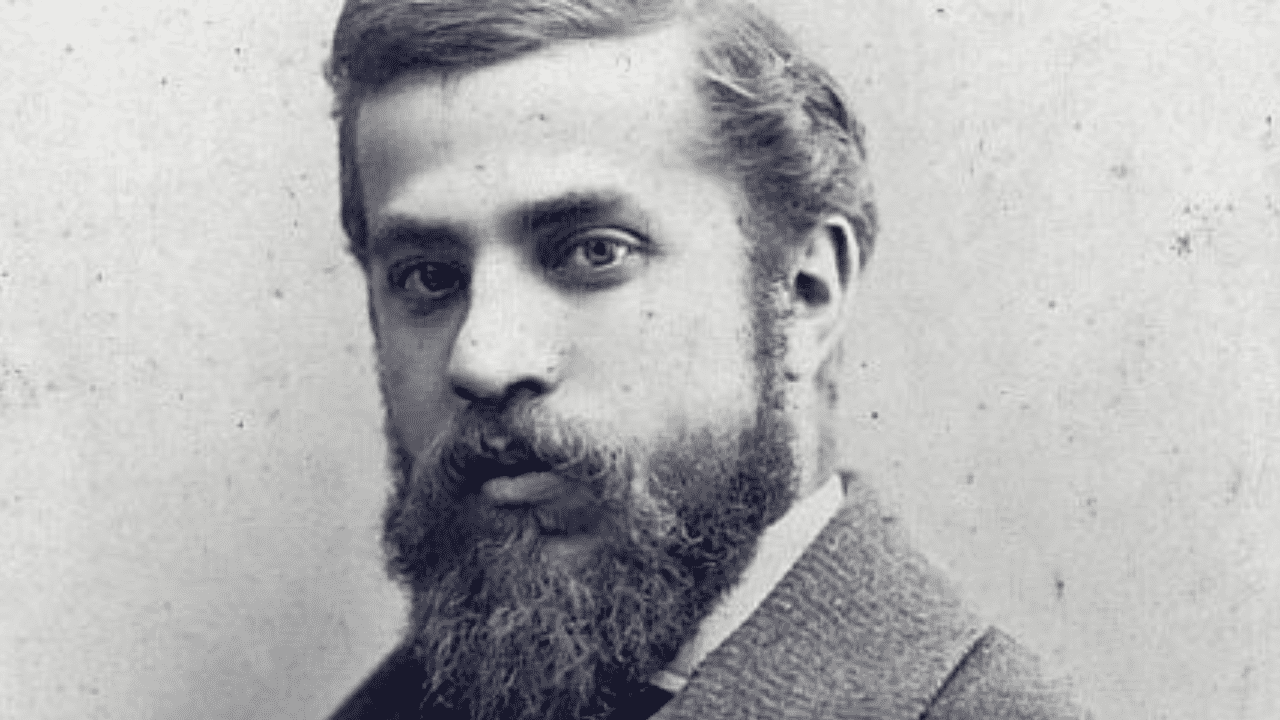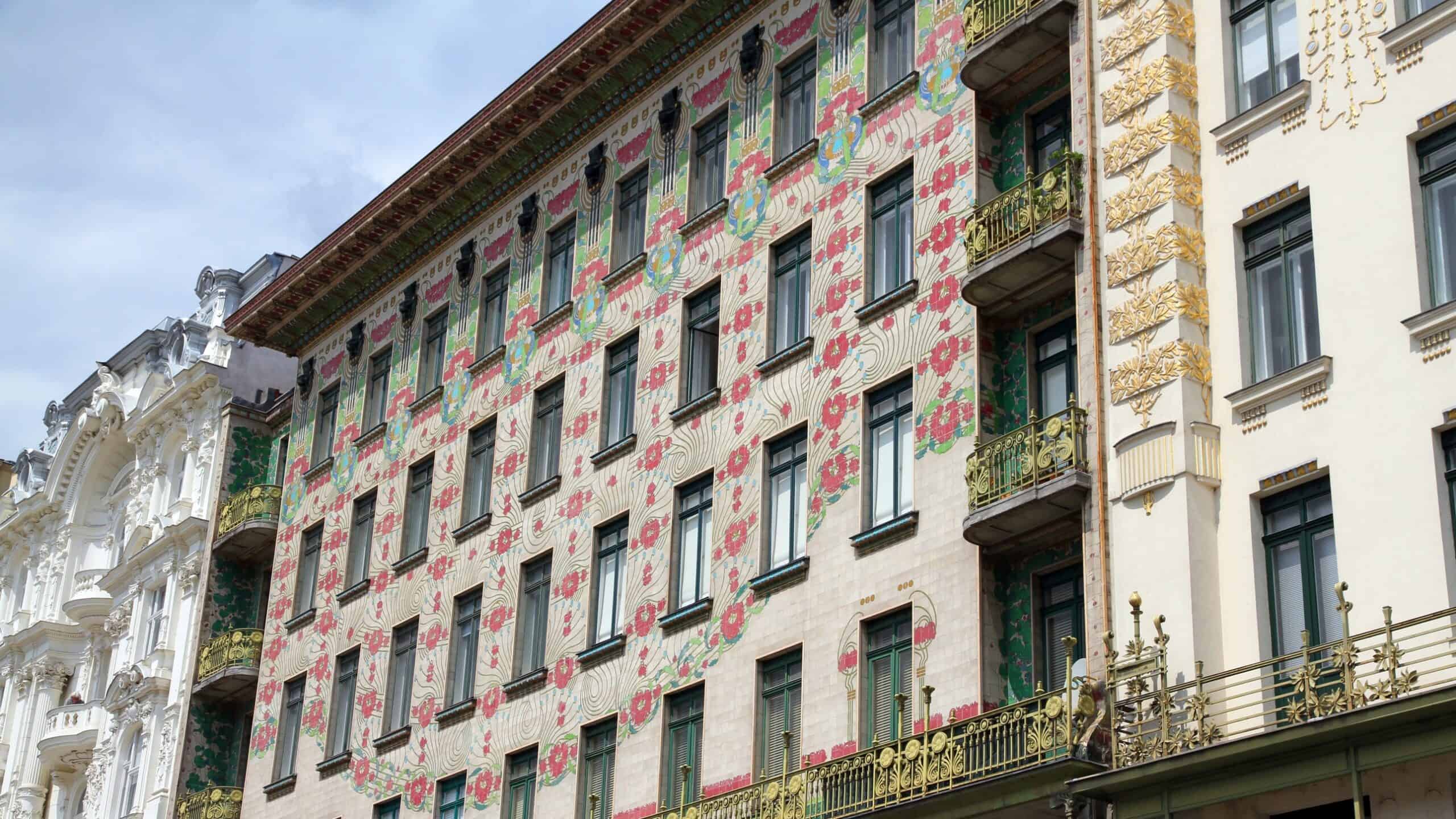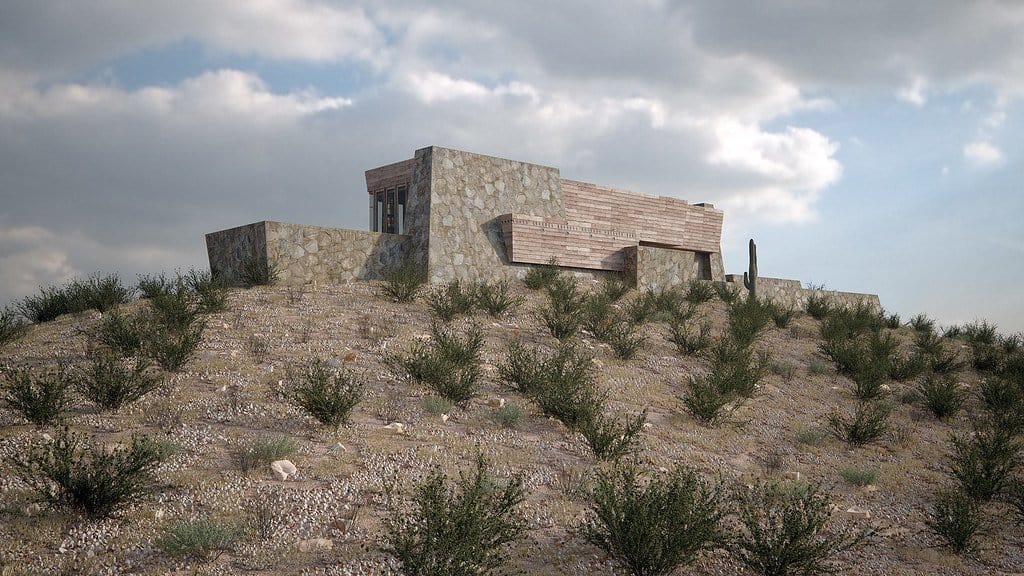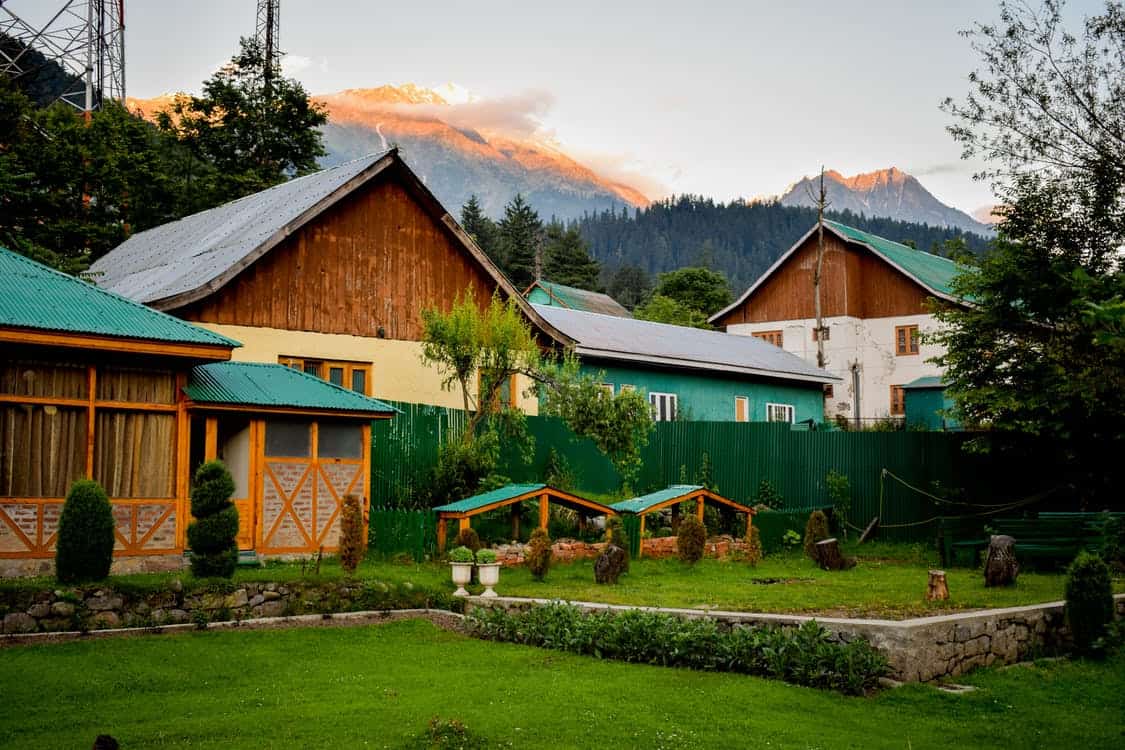Chicago, the Windy City, is famous for its world-renowned architecture. It is a city that has been at the forefront of architectural innovation for over a century. This article will look closely at 22 iconic buildings that define Chicago architecture. These buildings are not just structures but symbols of the city’s history, culture, and identity.
Let’s get started!
What Is Chicago Architecture?
Chicago architecture refers to the distinctive style of architecture developed in Chicago, Illinois, over the past century and a half. It is characterized by a unique blend of innovative design, practicality, and engineering and has significantly influenced architecture worldwide.
Chicago is known for its tall skyscrapers, which were made possible by the development of steel-frame construction in the late 19th century. The city is also known for its ornamental architecture, which incorporates intricate details and decorative elements.
Chicago architecture is also notable for its focus on functionality and sustainability. Many of the city’s buildings are designed to maximize natural light and ventilation while being energy-efficient and environmentally friendly.
Overall, Chicago architecture is a unique and distinctive style that has played a significant role in the history of architecture and continues to be an important influence on design today.
History of Chicago Architecture
The history of Chicago architecture is a story of innovation and progress, shaped by the city’s unique geography, economic and social conditions, and the vision of its architects and builders. From its early days as a frontier outpost on the shores of Lake Michigan to its emergence as a major industrial and commercial center, Chicago has been a city that embraces change and transformation, and its architecture always reflects this.
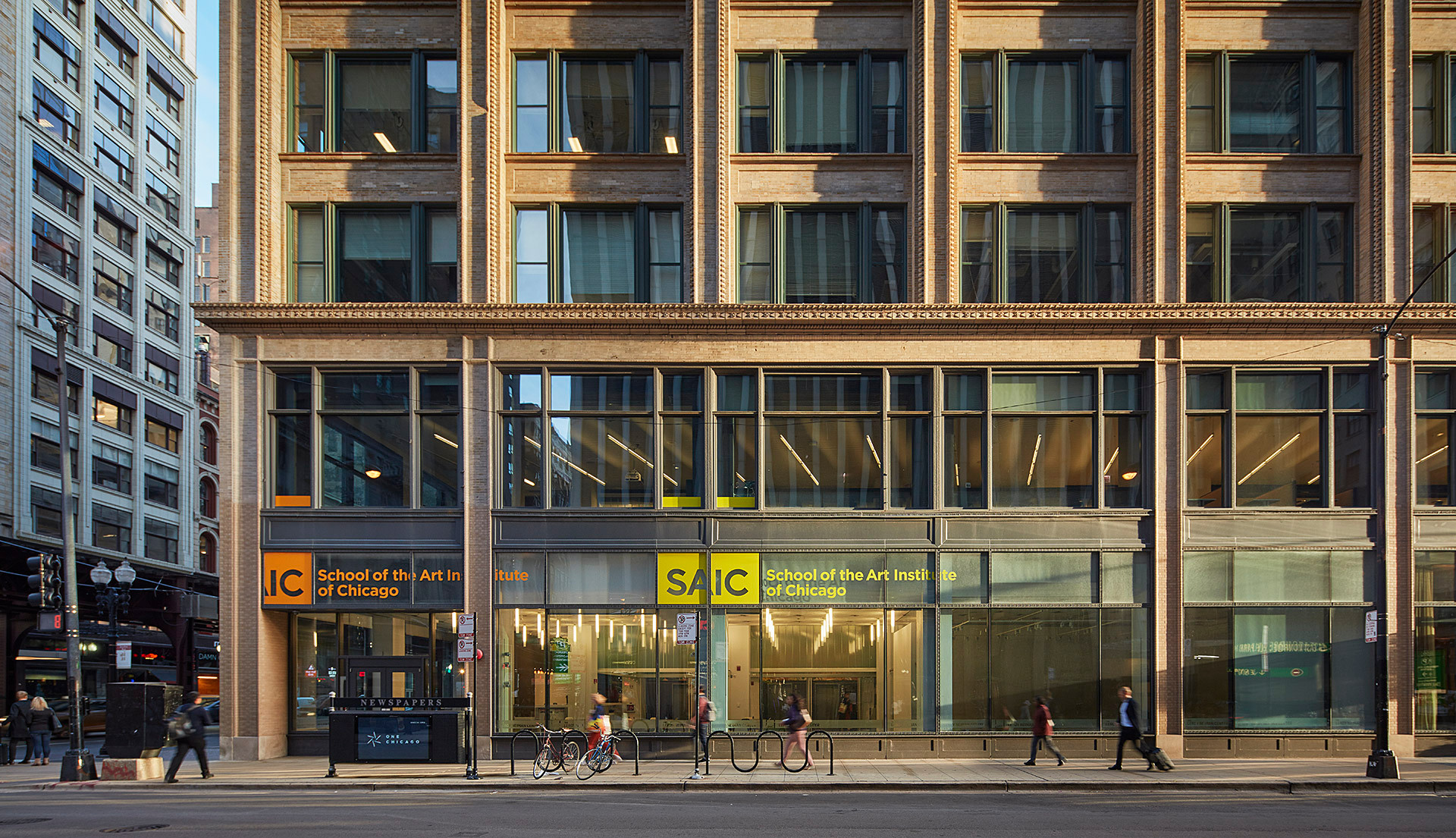
Image credit: studyarchitecture.com
The Chicago School of Architecture, which arose in the early 20th century, is considered one of the most important movements in the history of American architecture. Led by architects such as William Le Baron Jenney, Louis Sullivan, and Daniel Burnham, the Chicago School was characterized by its use of new construction techniques and materials, such as steel and reinforced concrete, and its emphasis on functionality and efficiency.
Another great movement was the Chicago Architecture Center (CAC), established in 1966 by a group of architects, designers, and city planners. It was initially known as the Chicago Architecture Foundation, which aimed to promote the appreciation and preservation of the city’s rich architectural heritage.
Over the years, the CAC has expanded its programs and activities, offering walking tours, boat tours, lectures, and educational programs for children and adults. The organization has also built an extensive collection of architectural artifacts, including models, drawings, and photographs.
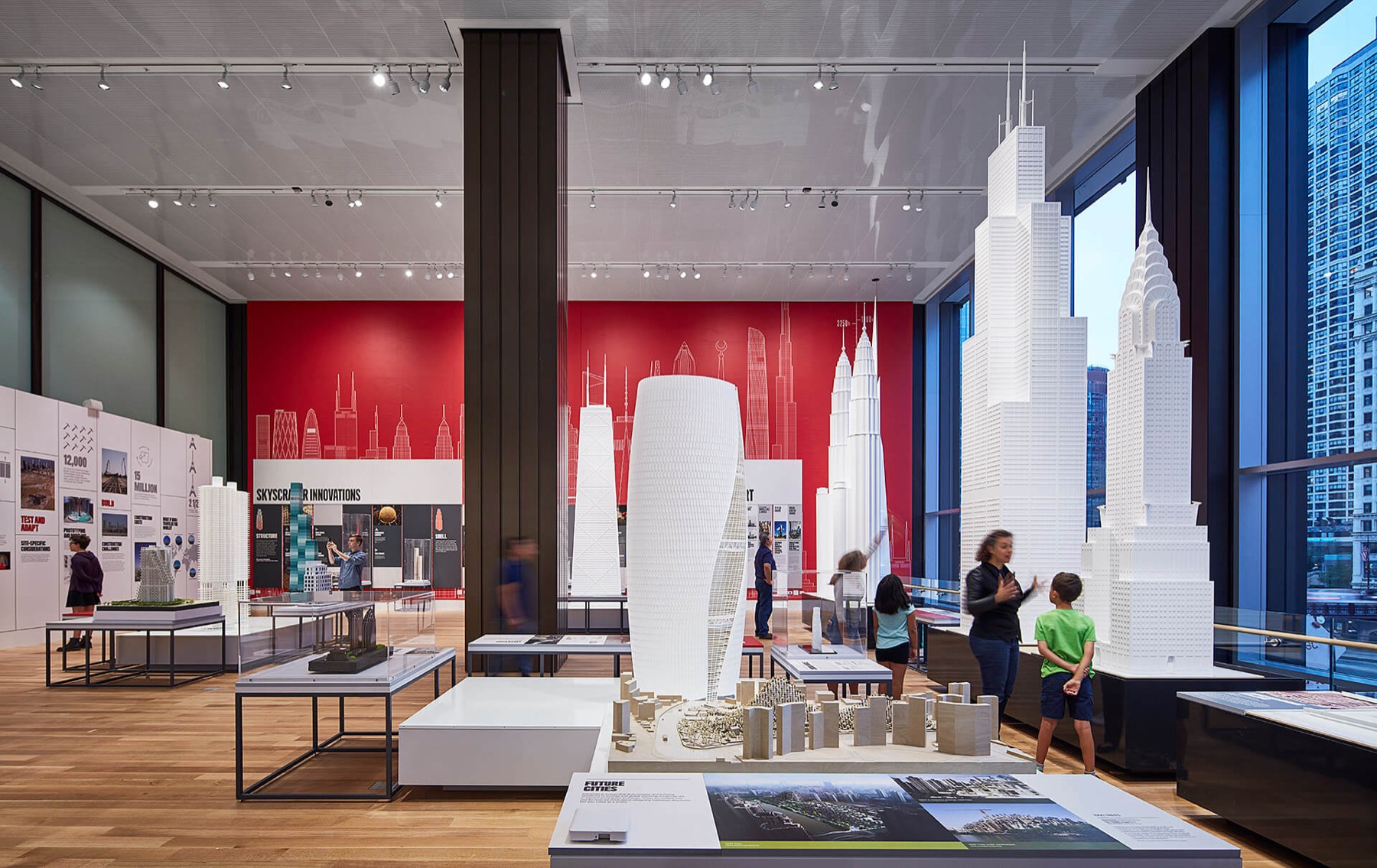
Image credit: choosechicago.com
Today, the CAC is one of the most prominent organizations dedicated to architecture and design in the United States and is recognized as a leading cultural institution in Chicago.
Characteristics of Chicago Architecture
Some of the key characteristics of Chicago architecture include:
1. Skyscrapers
Chicago is known for towering skyscrapers, many designed and built during the late 19th and early 20th centuries. These buildings were made possible by advanced construction techniques, such as the steel-frame construction method, which allowed buildings to be constructed to unprecedented heights.
2. Functionality
Chicago architecture has always been focused on functionality and practicality, with buildings designed to meet the needs of their occupants and users. It can be seen in the way that many of the city’s buildings are designed to maximize natural light and ventilation and efficiently use space.
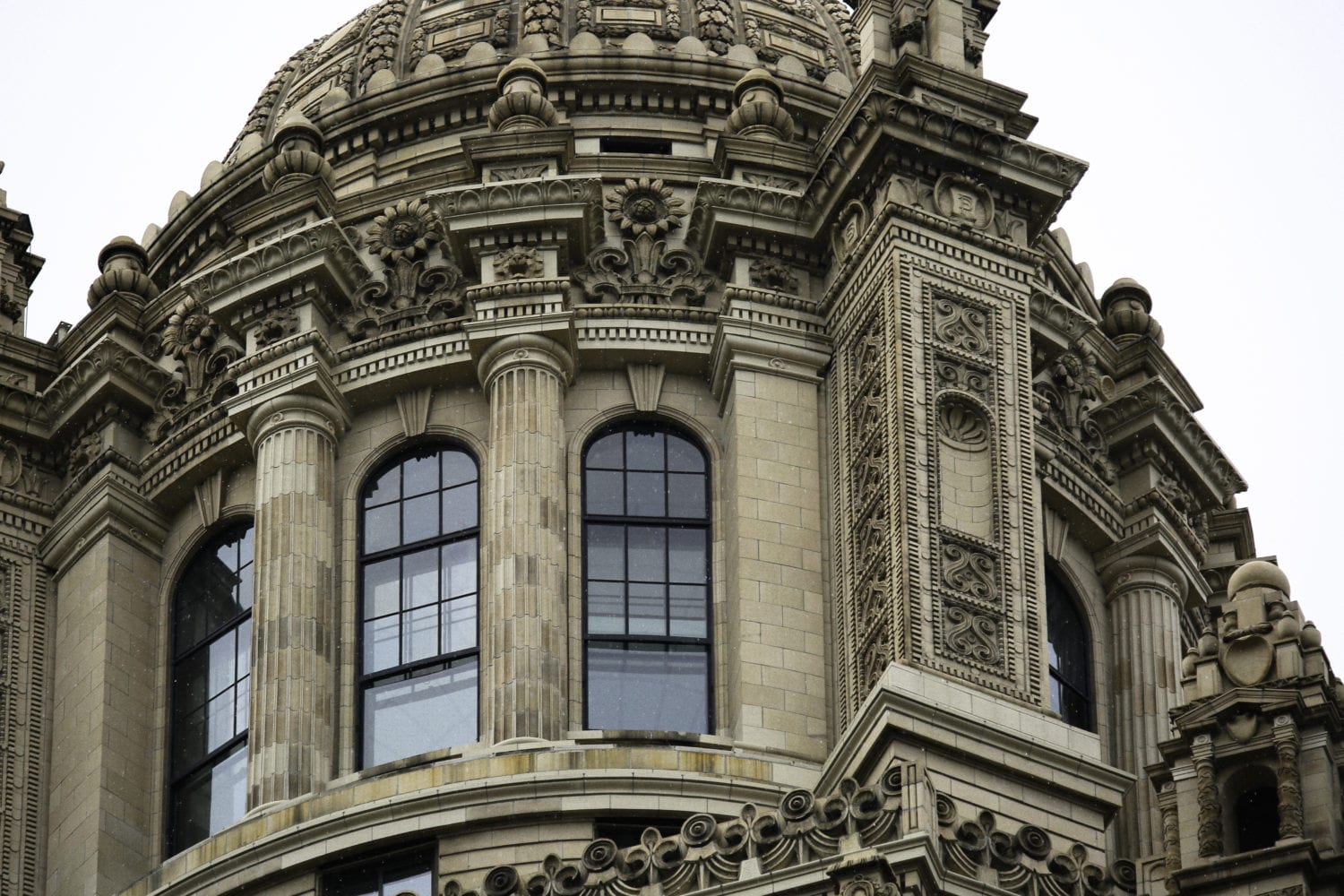
Image credit: rbanremainschicago.com
3. Ornamentation
While functionality is important in Chicago architecture, many buildings also feature ornamental details and decorative elements. One can see this in the intricate stonework and terra cotta ornamentation that adorns many of the city’s historic buildings.
4. Modernism
Chicago has been a leader in the modernist movement, with architects such as Mies van der Rohe and Walter Gropius helping to define the style.
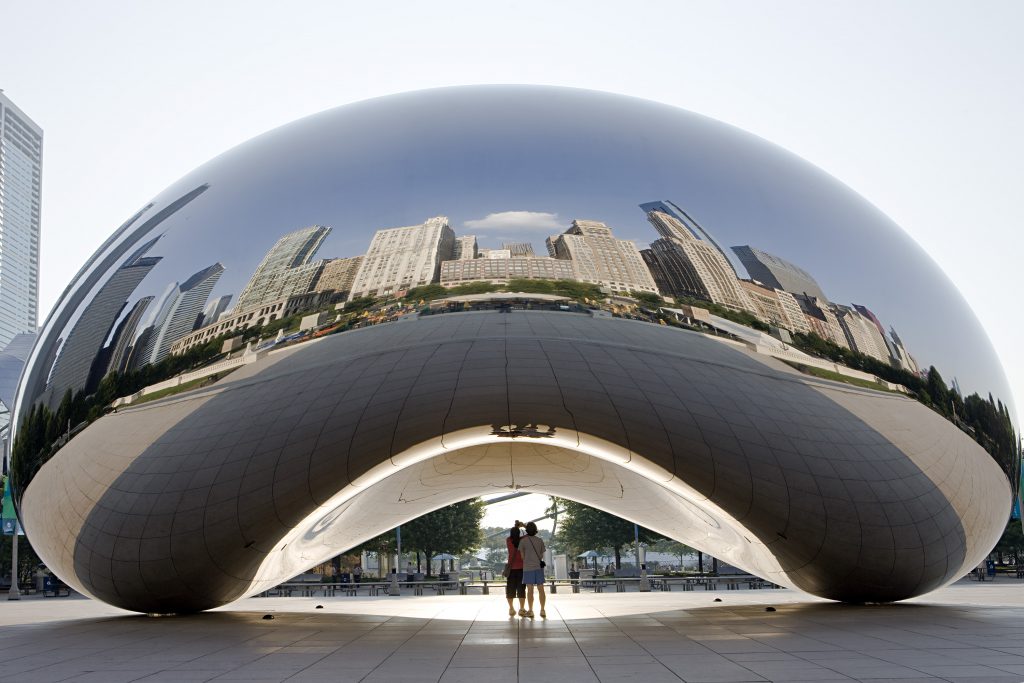
Image credit: blog.housewares.org
Modern architecture is characterized by its clean lines, use of glass and steel, and minimal ornamentation.
5. Postmodernism
In the 1970s and 1980s, a new wave of architects influenced by the postmodernist movement emerged in Chicago. Postmodern buildings often feature playful, eclectic designs that draw on historical and decorative elements.
6. Sustainability
Chicago has been at the forefront of the green building movement, with many of its new buildings designed to be environmentally friendly and energy-efficient. We can see this using green roofs, solar panels, and other sustainable technologies.

Image credit: architecture.org
7. Adaptive Reuse
Many of Chicago’s historic buildings have been repurposed and adapted for new uses. We can see how old factories and warehouses have been transformed into apartments, offices, and other spaces.
Overall, Chicago architecture is characterized by a sense of innovation, practicality, and creativity, with buildings designed to meet the needs of their occupants while pushing the boundaries of design and engineering. Below is a list of 22 buildings that are famous for utilizing Chicago architecture as per the Chicago architecture center.
Examples of Chicago Architecture
1. The Willis Tower
Formerly known as the Sears Tower, the Willis tower is one of the most iconic towers in the world. It was completed in 1973 and held the title of the world’s tallest building for over two decades. The building is a symbol of Chicago’s innovation and industrial power.
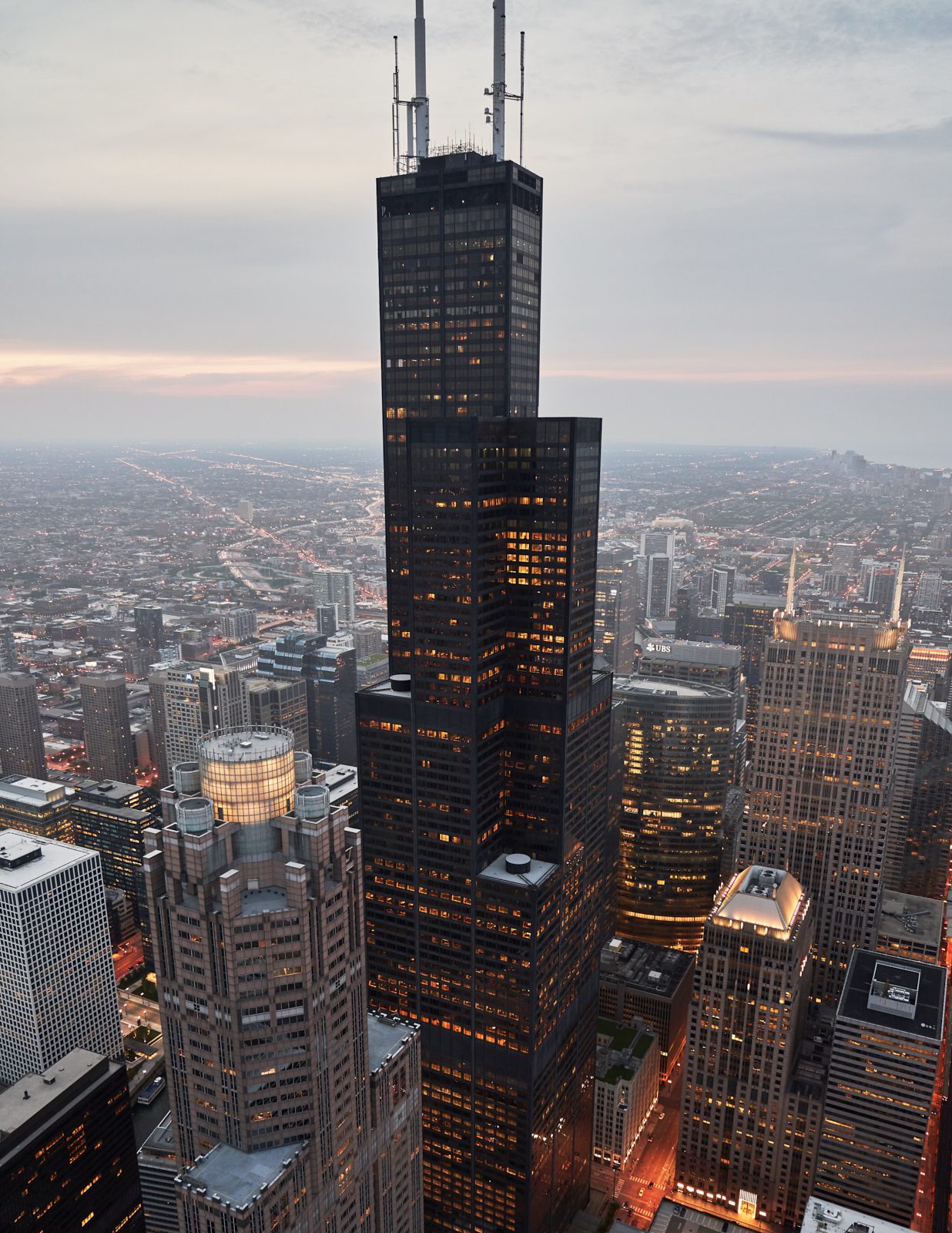
Image credit: theskydeck.com
The Willis Tower was designed by Skidmore, Owings & Merrill (SOM), a renowned architecture firm in Chicago. The building has a unique design that features nine square tubes with a height of 1,450 feet. The tower has 110 floors, and the observation deck on the 103rd floor offers breathtaking views of the city.
Serving as a Chicago landmark, the Willis Tower, among the tallest building in the world, is an architectural marvel and a cultural icon. It has been featured in multiple films and TV shows, including Ferris Bueller’s Day Off and The Dark Knight. The building also played a significant role in Chicago’s history, symbolizing the city’s resilience after the devastating fire of 1871.
2. The John Hancock Center
The John Hancock Center is another iconic skyscraper in Chicago. It was completed in 1969 and was designed by the architect Bruce Graham of SOM. The building symbolizes Chicago’s modernist architecture and has a unique design that features an X-shaped bracing system.

Image credit: britannica.com
The John Hancock Center is 100 stories tall, and the observation deck on the 94th floor offers stunning views of the city. The building has a distinctive look and is instantly recognizable by its sleek, black exterior.
The John Hancock Center has been a cultural icon in Chicago for decades. It has been featured in numerous movies and TV shows, including The Fugitive and Transformers: Dark of the Moon. The building is also a significant landmark for Chicagoans and visitors alike.
3. The Aqua Tower
The Aqua Tower is a recent addition to the Chicago skyline, but it has quickly become an iconic building in the city. The tower was completed in 2009 and was designed by the architect Jeanne Gang of Studio Gang Architects. The building symbolizes Chicago’s commitment to sustainable design and innovation.

Image credit: architecture.org
The Aqua Tower is an 82-story skyscraper with a unique, undulating design. The tower has balconies that jut out at different angles, giving the building a distinctive look. The balconies also serve an important function, as they help to reduce wind resistance and provide shading for the building’s interior.
The Aqua Tower is an architectural marvel and a symbol of sustainability. The building has numerous environmentally-friendly features, including a green roof, a rainwater collection system, and energy-efficient windows. The building has received numerous awards for its design and sustainability and has become a model for other cities worldwide.
4. The Tribune Tower
The Tribune Tower is one of Chicago’s most iconic buildings and a prime example of the Gothic Revival architectural style. The tower was designed by architects John Mead Howells and Raymond Hood, who completed it in 1925, and is located on the Michigan Avenue bridge. The building’s most distinctive feature is its ornate exterior, adorned with various stone carvings and sculptures.

Image credit: architecture.org
The building’s crown recalls a Medieval European tower, replicating the Butter Tower of the 13th-century Rouen Cathedral in France. The tower was constructed as the home of the Chicago Tribune newspaper and contains offices, printing facilities, and other amenities. Over the years, the building has become a beloved symbol of the city’s rich architectural heritage and is now home to various businesses and organizations.
5. The Rookery Building
The Rookery Building is one of Chicago’s most famous and beloved buildings, constructed in 1888.
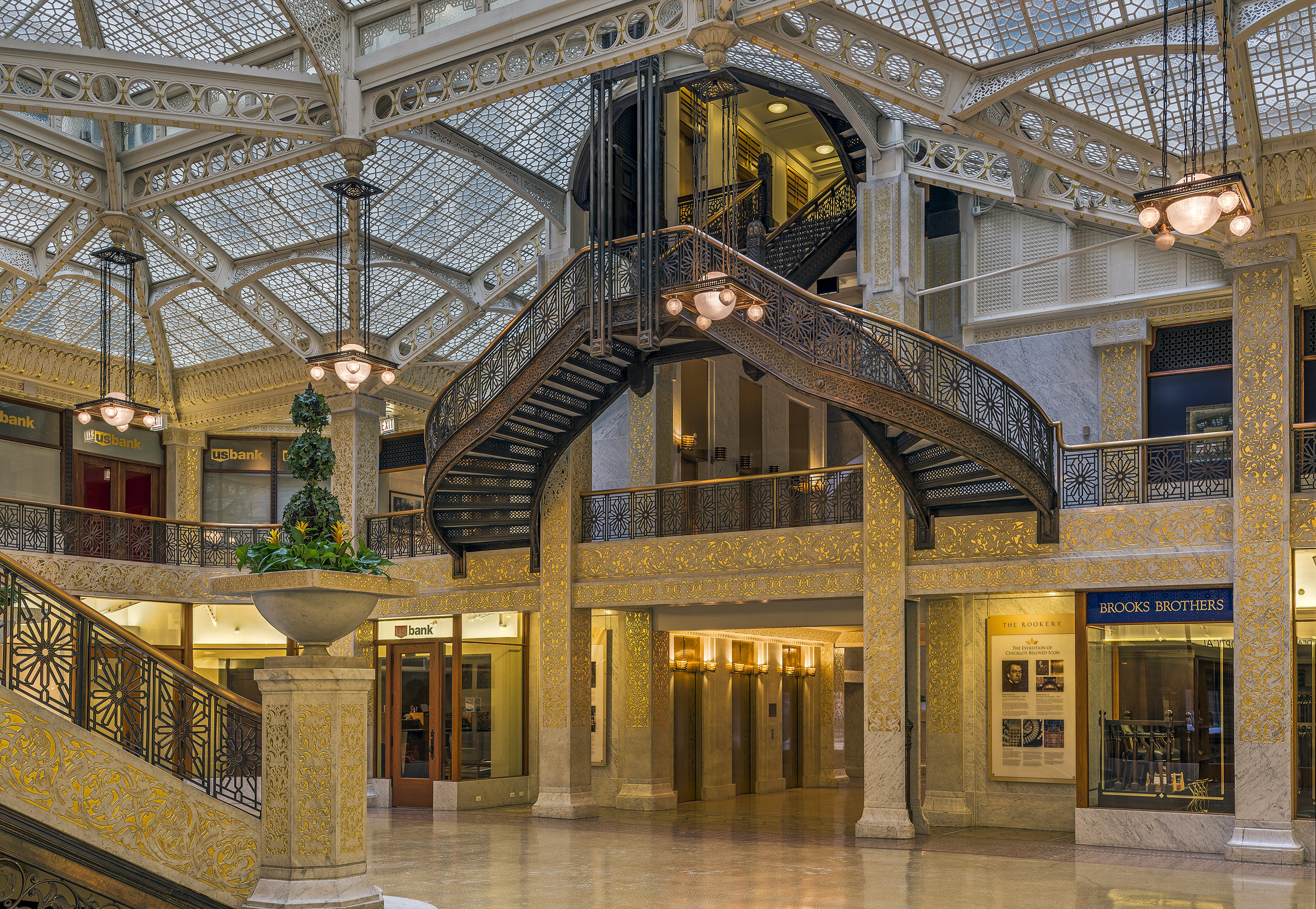
Image credit: therookerybuilding.com
The building was designed by architects John Wellborn Root and Daniel Burnham and is located in the Loop district. The building’s most distinctive feature is its interior atrium, which is topped by a glass ceiling and a series of wrought-iron balconies. The Rookery Building is considered one of the finest examples of the late 19th-century Chicago School of architecture.
6. 875 North Michigan Avenue
875 North Michigan Avenue, also known as the John Hancock Center, is one of Chicago’s most recognizable buildings, completed in 1969.
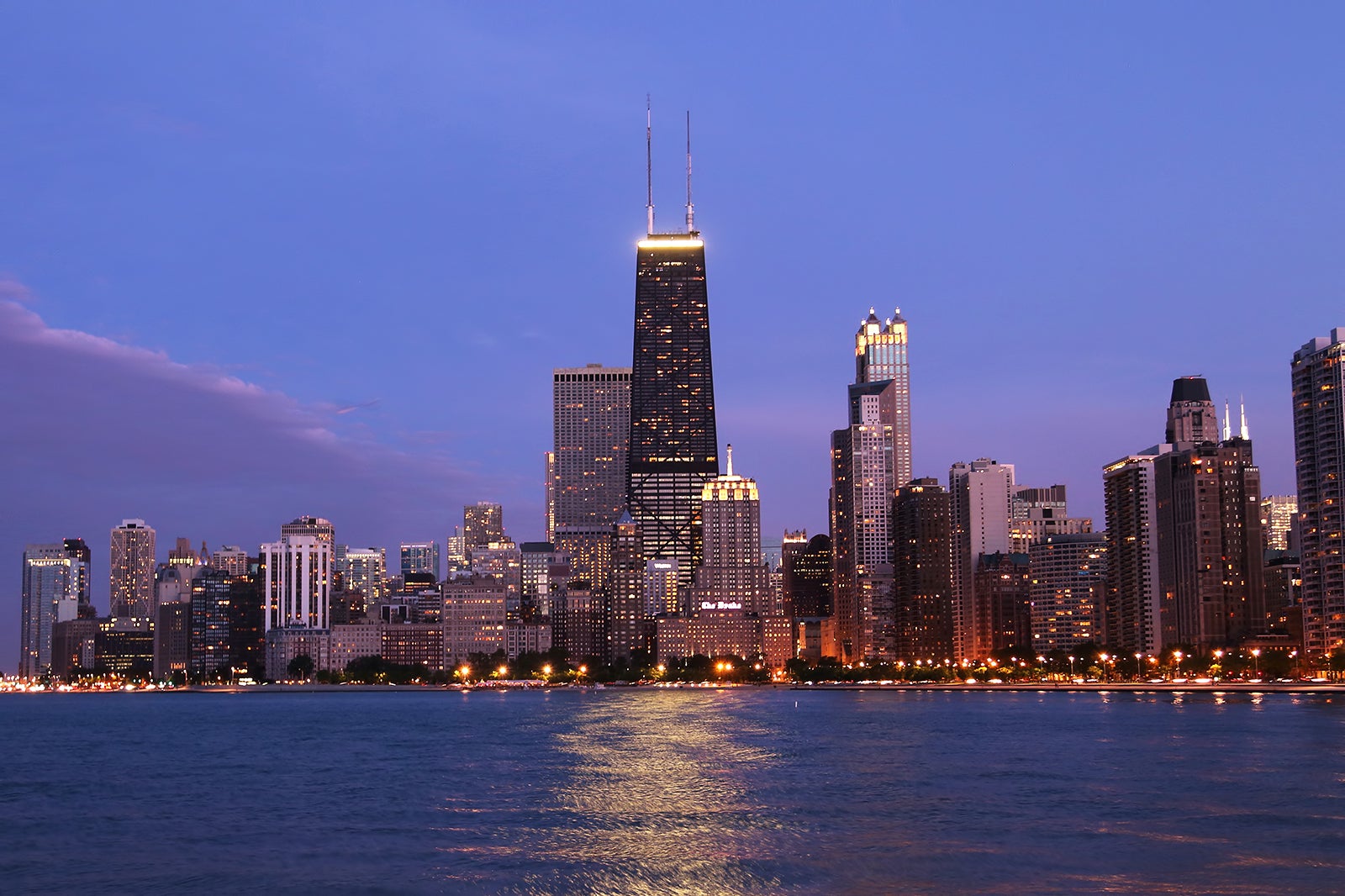
Image credit: hotels.com
The building was conceived by Skidmore, Owings & Merrill and stood tall at 1,128 feet (343 meters). The building’s most distinctive feature is its X-bracing, which helps to support the structure against wind loads.
7. The Wrigley Building
The Wrigley Building is one of Chicago’s most famous landmarks and a prime example of the Beaux-Arts architectural style.

Image credit: en.wikipedia.org
The building was designed by architects Graham, Anderson, Probst & White in 1921 and is located on Michigan Ave. The building’s most distinctive features are its clock tower and its gleaming white facade, which is made of terra cotta.
8. The Chicago Board of Trade Building
Completed in 1930, the Chicago Board of Trade Building is a historic landmark in the Loop neighborhood of Chicago.

Image credit: architecture.org
Designed by architects Holabird & Root, the building is known for its distinctive Art Deco design, which features a large statue of the goddess Ceres on its roof. The building is home to a mix of office and retail spaces and is considered one of the world’s most important examples of Art Deco architecture.
9. The Carbide & Carbon Building
The Carbide & Carbon Building is a striking example of the Art Deco architectural style completed in 1929. The building was designed by architects Daniel and Hubert Burnham and is located on Michigan Avenue.

Image credit: architecture.org
The building’s most distinctive feature is its green terra cotta facade and ornate gold-leafed crown. Today, the building is home to a luxury hotel and has become a beloved symbol of Chicago’s architectural heritage.
10. Marina City
Marina City is a unique and iconic building that is instantly recognizable by its cylindrical shape and bright yellow color.
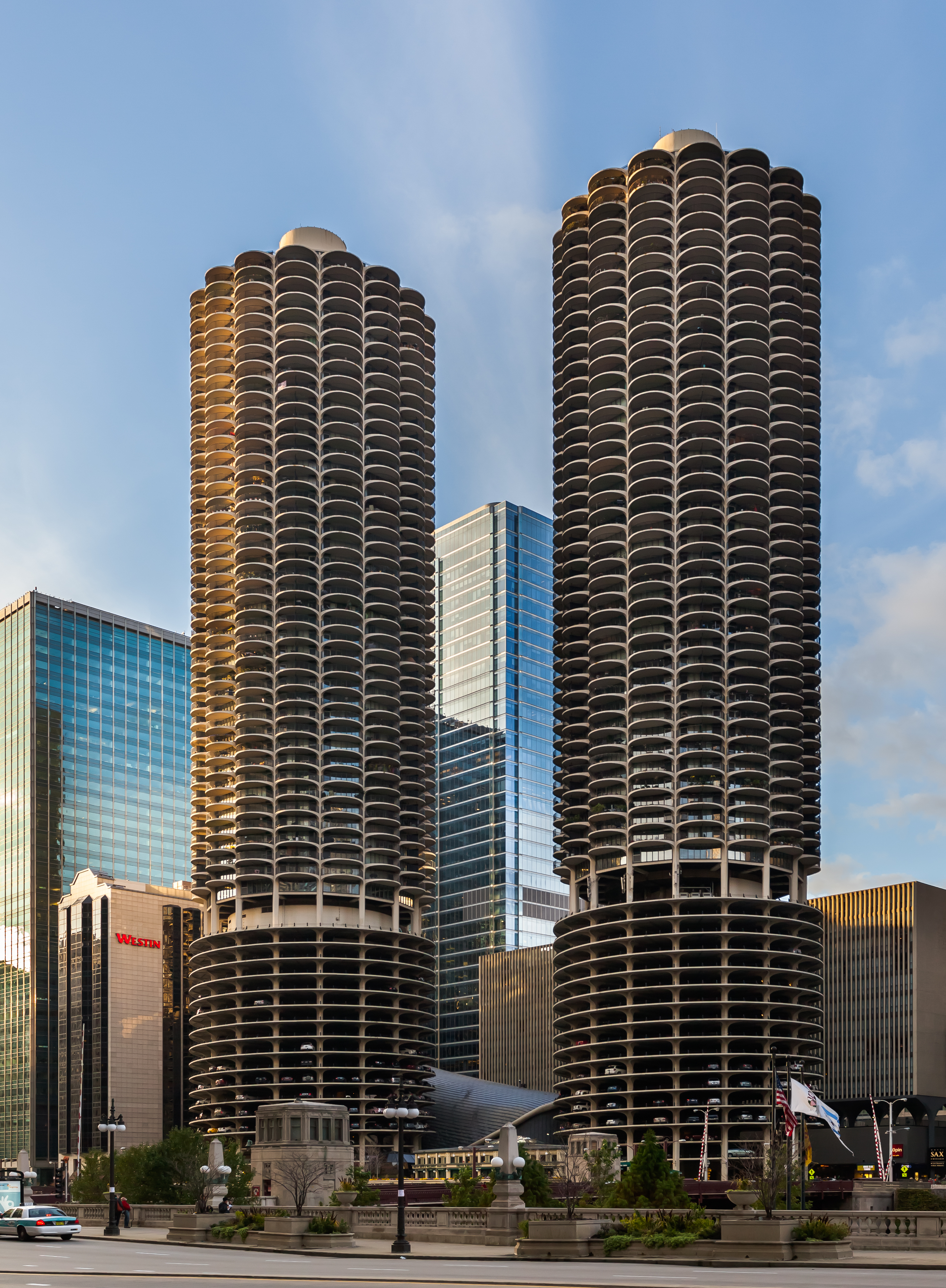
Image credit: wikipedia.org
The building was designed by architects Bertr and Goldberg in 1964 and is located on the Chicago River. Marina City consists of two 61-story towers containing a mix of residential, commercial, and parking spaces.
The building’s cylindrical shape and individual balconies were designed to maximize views of the surrounding area and to provide a sense of community among the residents. The building is a prime example of the modernist architectural style, and its innovative design has earned it numerous awards and accolades over the years.
11. The Art Institute of Chicago
While not technically a building, the Art Institute of Chicago is an iconic institution that has helped define Chicago’s architectural heritage. The museum is located in a complex of buildings in Grant Park, containing a vast collection of artwork from around the world. The museum’s main building was completed in 1893 and was designed by Shepley, Rutan, and Coolidge in the Beaux-Arts architectural style.
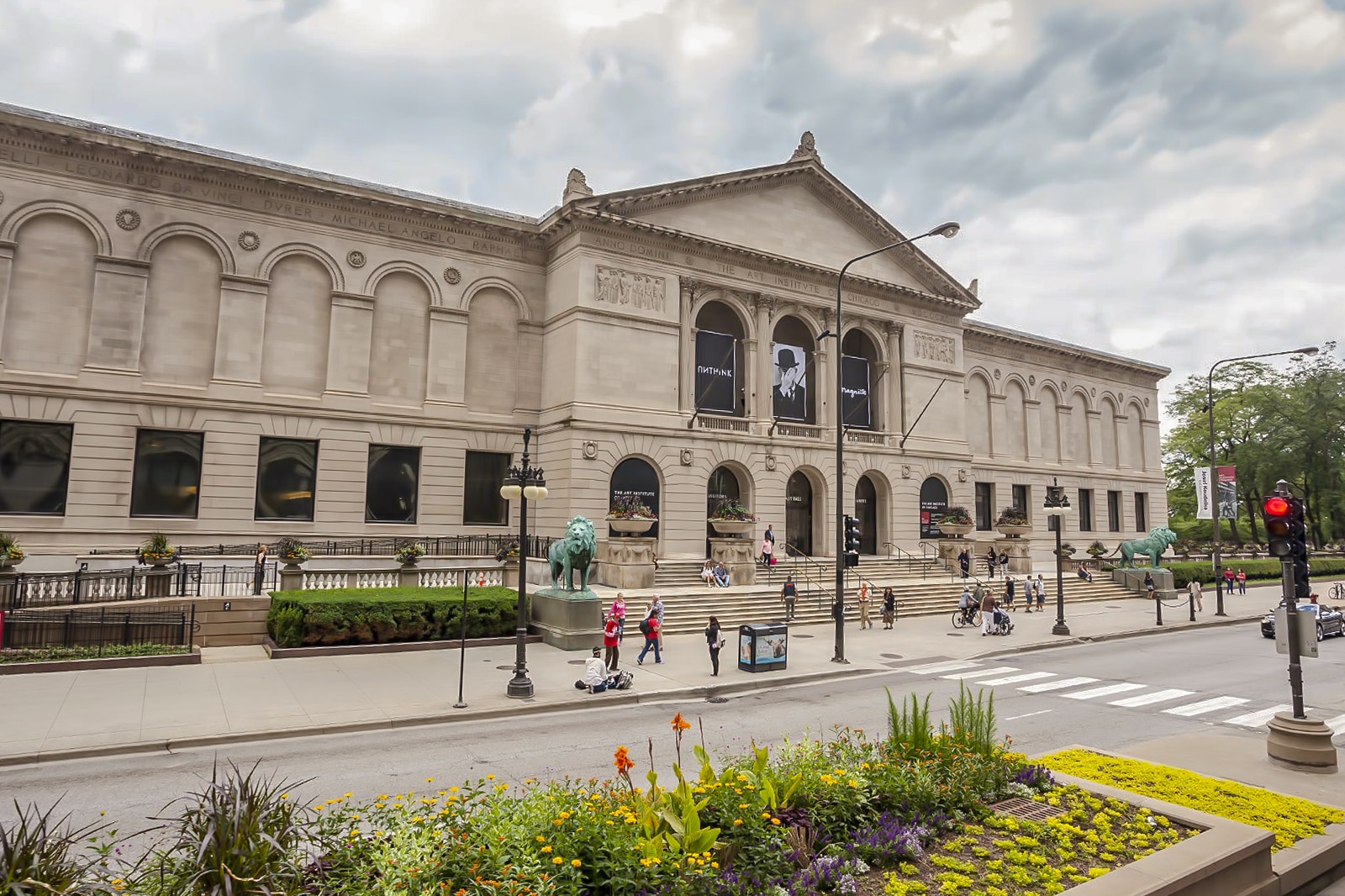
Image credit: hotels.com
The building’s exterior is adorned with various ornate features, including a grand entrance and a series of sculptures. Over the years, the Art Institute of Chicago has become one of the most famous art museums in the world and has helped cement Chicago’s reputation as a cultural hub.
12. The Monadnock Building
Completed in 1893, the Monadnock Building is a historic office building located in the Loop neighborhood of Chicago. Designed by Burnham & Root, the building originally consisted of two separate buildings but was later connected by an interior courtyard.

Image credit: architecture.org
The building is known for its distinctive narrow windows, which helped to maximize natural light within the building before electric lighting was widely available. The Monadnock Building is an important example of early Chicago skyscraper design and has been designated a National Historic Landmark.
13. The Robie House
Designed by Frank Lloyd Wright among his eight works and completed in 1910, the Robie House is a residential building in the Hyde Park neighborhood of Chicago. The house features a unique Prairie-style design with a low-pitched roof, overhanging eaves, and an open floor plan.

Image credit: franklloydwright.org
The house was designed to blend in with its natural surroundings and incorporates many Japanese architectural elements, including a central courtyard and a minimalistic interior. Today, the Robie House is a National Historic Landmark and is considered one of the most important works of residential architecture in the United States.
14. The Chicago Water Tower
Completed in 1869, the Chicago Water Tower is a historic landmark on Michigan Ave.
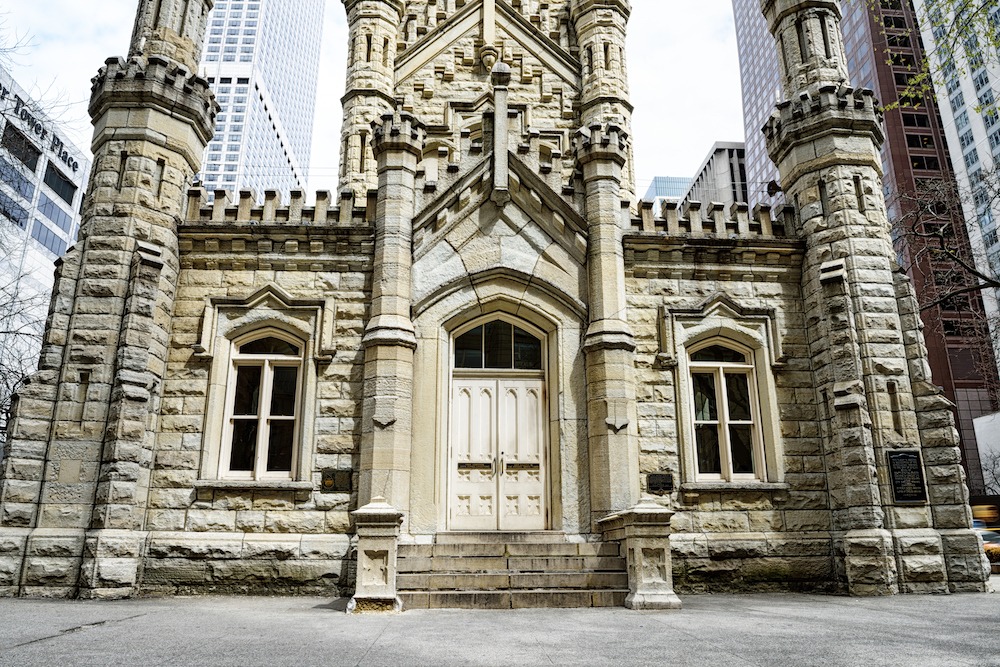
Image credit: masonrymagazine.com
Architect William W. Boyington designed the tower to serve as a water pumping station for the city. The tower is known for its distinctive castle-like design, limestone exterior, and towering turret. The tower survived the Great Chicago Fire of 1871 and is now one of the oldest buildings in Chicago.
15. The Auditorium Building
Completed in 1889, the Auditorium Building is a historic landmark in the Loop neighborhood of Chicago.
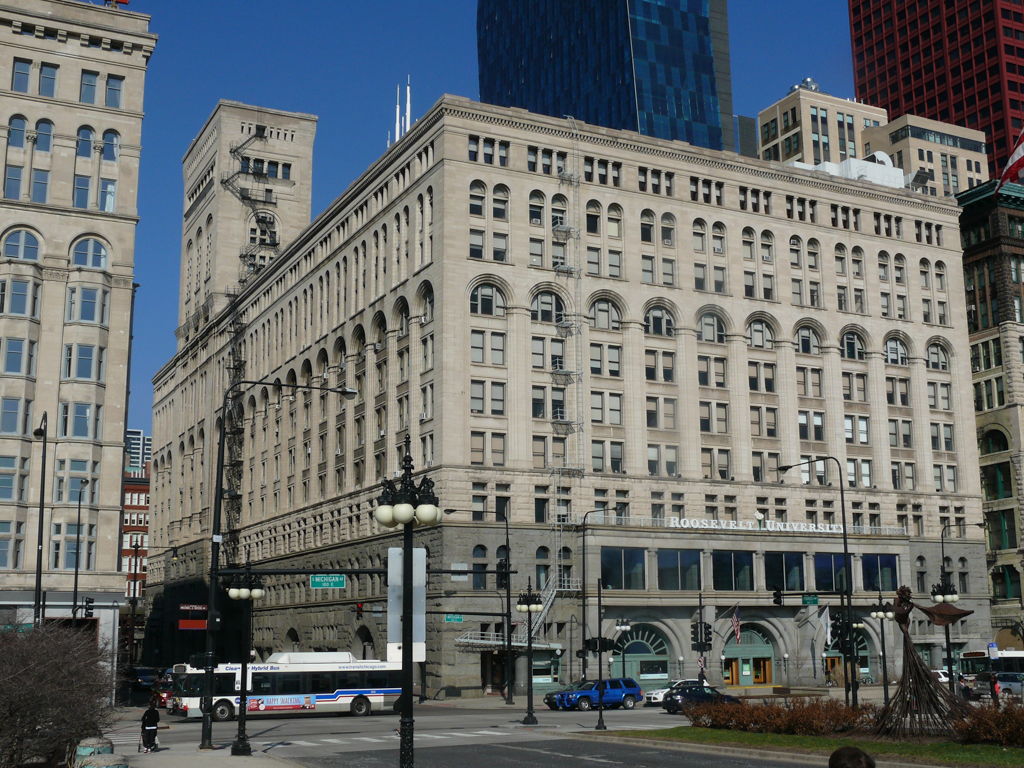
Image credit: sah-archipedia.org
Designed by architects Dankmar Adler and Louis Sullivan, the building features a unique blend of architectural styles, including Beaux-Arts and Art Nouveau elements.
The building is known for its ornate exterior and grand interior, including a large concert hall and theater. The Auditorium Building is an important example of late 19th-century American architecture and is now home to a mix of offices, residential spaces, and a hotel.
16. The Merchandise Mart
Completed in 1930, the Merchandise Mart is a massive commercial building in Chicago’s River North neighborhood. Designed by Graham, Anderson, Probst & White, the building originally served as the home of the Marshall Field & Company department store.

Image credit: tripadvisor.com
The building is notable for its size, spanning more than four million square feet, and distinctive art deco design, including a towering clock face and a large central atrium. Today, the Merchandise Mart serves as a hub for the design and architecture industries and is considered one of the largest commercial buildings in the world.
17. The Marquette Building
Completed in 1895, the Marquette Building is a historic landmark in the Loop neighborhood of Chicago.

Image credit: architecture.org
Designed by architects Holabird & Roche, the building features a unique blend of architectural styles, including Gothic and Romanesque design elements. The building is known for its distinctive copper roof and ornate lobby, which features a large stained glass window. The Marquette Building is now home to a mix of office and retail spaces.
18. The Harold Washington Library Center
Completed in 1991, the Harold Washington Library Center is a public library located in the Loop neighborhood of Chicago.

Image credit: architecture.org
The building is designed by Hammond, Beeby & Babka and features a unique postmodern design, with a large atrium and a copper roof. The library is known for its extensive collection of books and unique architecture, which has won numerous design awards since its completion.
19. The 860-880 Lake Shore Drive Apartments
Completed in 1951, the 860-880 Lake Shore Drive Apartments are a pair of high-rise residential buildings in the Streeterville neighborhood of Chicago.

Image credit: architecture.org
Conceived by architects Ludwig Mies van der Rohe and Alfred Caldwell, the buildings are known for their modernist design, which features a clean, minimalist aesthetic and a focus on functionalism. The buildings were some of Chicago’s first examples of the International Style of architecture.
20. The Carson Pirie Scott Building
Completed in 1899, the Carson Pirie Scott Building is a historic landmark in the Loop neighborhood of Chicago.

Image credit: en.wikipedia.org
Designed by architect Louis Sullivan, the building is known for its distinctive ornate exterior, which features intricate decorative elements and a large central entrance. The building was originally built as a department store and is now home to a mix of office and retail spaces. It is considered one of the most important examples of early 20th-century American architecture.
21. The McCormick Tribune Campus Center
Completed in 2003, the McCormick Tribune Campus Center is a student center located on the Illinois Institute of Technology campus in the Bronzeville neighborhood of Chicago.
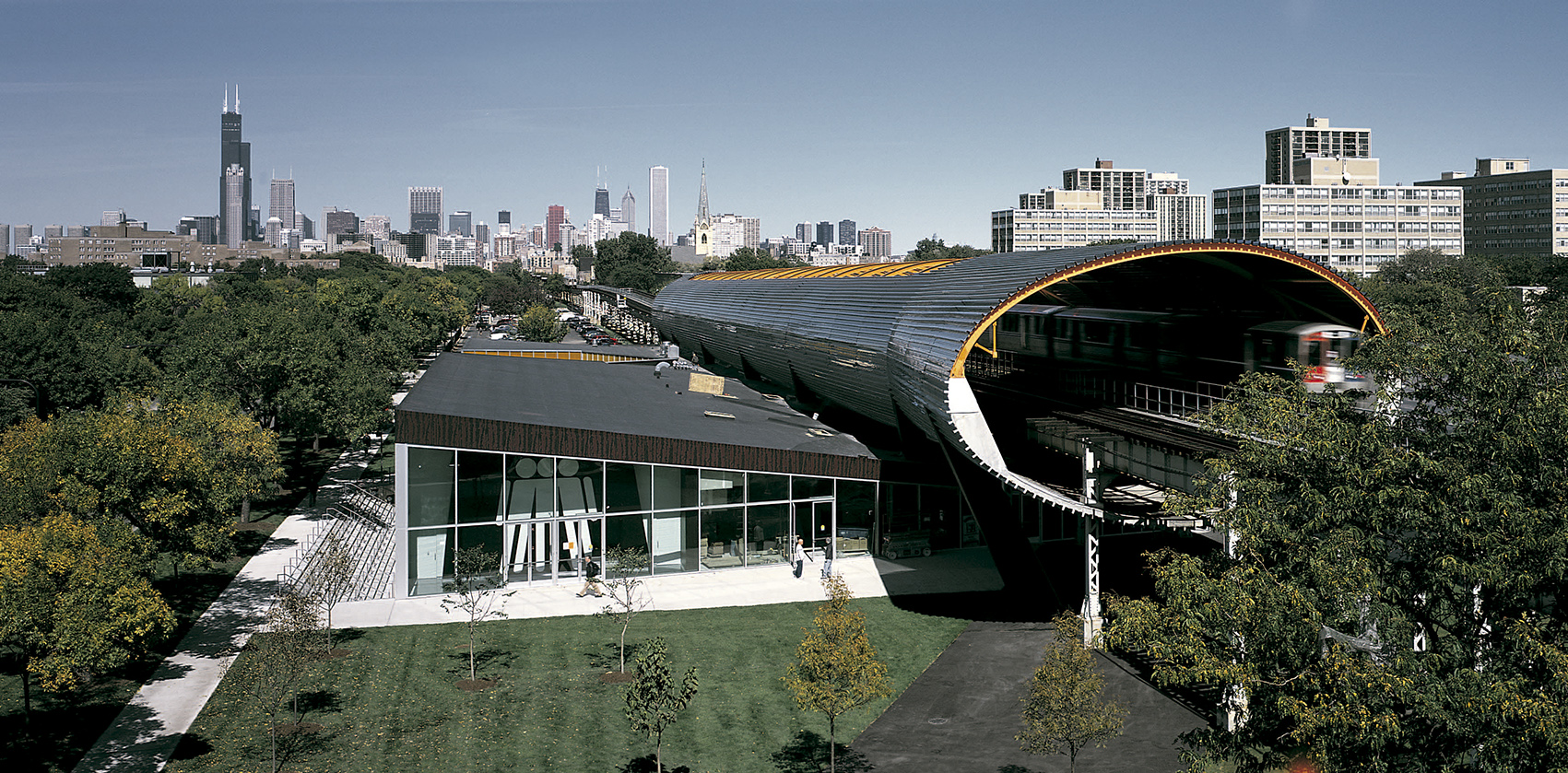
Image credit: arquitecturaviva.com
Designed by architect Rem Koolhaas and his firm OMA, the building is known for its unique design, which features a series of stacked, irregularly-shaped boxes. The building features a mix of recreational, dining, and study spaces for students.
22. The James R. Thompson Center
Completed in 1985, the James R. Thompson Center is a government building located in the Loop neighborhood of Chicago.

Image credit: architecture.org
Designed by architect Helmut Jahn, the building is known for its distinctive glass-and-steel design, which features a large atrium with a soaring skylight. The building is home to a mix of government offices and retail spaces and has been featured in numerous films and television shows.
Featured Image Credits: nytimes.com

